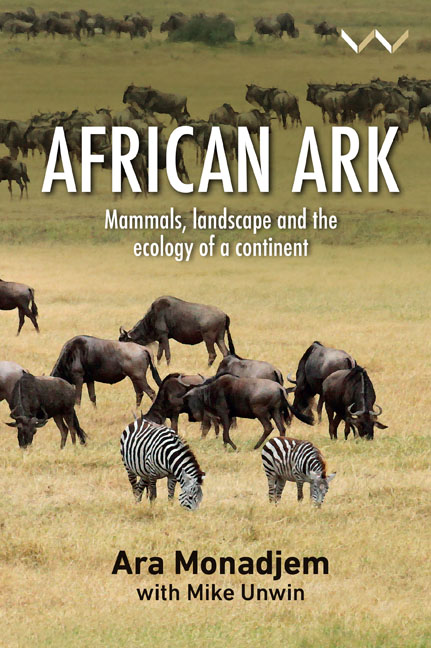Book contents
- Frontmatter
- Dedication
- Contents
- List of Plate Photographs
- List of Figures and Tables
- Acknowledgements
- Foreword
- Preface
- Chapter 1 A Continent of Plenty
- Chapter 2 The Species Conundrum
- Chapter 3 The History of Africa’s Mammals
- Chapter 4 Islands as Species Factories
- Chapter 5 Evolution on the African Mainland
- Chapter 6 Giant Mammals Shaping the Landscape
- Chapter 7 A Place for Every Species
- Chapter 8 Fluctuating Populations
- Chapter 9 The Human Factor
- Chapter 10 The Sinking Ark?
- Glossary
- Notes
- References
- Recommended Reading
- Index
Chapter 8 - Fluctuating Populations
Published online by Cambridge University Press: 29 November 2023
- Frontmatter
- Dedication
- Contents
- List of Plate Photographs
- List of Figures and Tables
- Acknowledgements
- Foreword
- Preface
- Chapter 1 A Continent of Plenty
- Chapter 2 The Species Conundrum
- Chapter 3 The History of Africa’s Mammals
- Chapter 4 Islands as Species Factories
- Chapter 5 Evolution on the African Mainland
- Chapter 6 Giant Mammals Shaping the Landscape
- Chapter 7 A Place for Every Species
- Chapter 8 Fluctuating Populations
- Chapter 9 The Human Factor
- Chapter 10 The Sinking Ark?
- Glossary
- Notes
- References
- Recommended Reading
- Index
Summary
So far, we have not really considered how the size of a species’ population contributes to its distribution. Yet populations of most species fluctuate in size from year to year depending on factors such as rainfall. In chapters 3, 4 and 5 we looked at how species have expanded and contracted their ranges as they have negotiated barriers, such as oceans and mountains, or tracked shifting habitat. We did this explicitly from an evolutionary perspective. In this chapter, we will see that populations of species also expand and contract in ecological time. It all boils down to just four simple factors: births and immigration, which increase an existing population; and death and emigration, which reduce it. However, unpicking how these four factors operate in an ever-changing environment is anything but simple, as we will see.
Understanding what factors drive the population dynamics of animals is important for several reasons. For one thing, managing populations of large, wild mammals – whether for conservation, meat production or hunting – requires us to maintain populations at ‘optimal’ levels so that we can, for example, maximise yield. There are also theoretical reasons for wanting to study population dynamics. For example, if we imagine a species that is widely distributed and abundant in more than one habitat, we tend to assume that it is doing well in an ecological sense. However, it could be that this species only thrives in one habitat (called the ‘source’), from which it colonises the adjacent habitat (called the ‘sink’). Such source–sink dynamics can profoundly influence the functioning of any ecosystem (Battin 2004).
HOW LIFE HISTORY AFFECTS POPULATIONS
A good place to start understanding population dynamics is life history. We all easily recognise differences between a mouse and a buffalo on morphological grounds: the former is small and furry, with continuously growing incisor teeth; the latter is much larger, with horns, hooves and no upper incisors at all. These differences may be interesting from a systematist's perspective, allowing us to comment on the evolutionary relatedness of different groups – although as we saw in chapter 2, molecular techniques have more or less taken over from morphological studies in this respect. However, to an ecologist, particularly a population ecologist interested in the fluctuations in an animal's numbers, life history traits are key.
- Type
- Chapter
- Information
- African ArkMammals, Landscape and the Ecology of a Continent, pp. 170 - 191Publisher: Wits University PressPrint publication year: 2023



